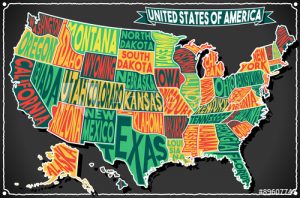A strong workers’ compensation provider of last resort is the strongest indicators of a healthy workers comp system within a state. States that have a strong provider of last resort are nearly across the board the states with the lowest rates on workers compensation premium. What is right for the state with a large population like New York may not be best for a state like Missouri with a much smaller population and a larger rural population. Also, what is best for a southern state with a warm climate like Florida is not what is best for a state in a cold climate like Illinois. Because of the vast differences in the workforce, the federal government has left the administration of the workers comp systems up to the state governments. There are three main ways in which states go about administering this necessary function for the business community; a state fund, a public private partnership, and the National Council on Compensation Insurance (NCCI).

Now there is one main reason for a need for a provider of last resort within the state workers compensation systems. That reason is because not all businesses are able to find insurance carriers willing to quote them coverage on the open market. In most industries an open market is the best way to monitor economic systems, but when it comes to providing insurance, it simply is not in the insurance companies best interest to quote coverage for some businesses or some industries. Some times a business cannot find coverage on the open market because of the business has several incidents a few years ina row or few incidents that were fairly severe. The business may also operate in an industry that is highly dangerous like off-shore oil-drilling or coal mining. In these situations, insurance companies may deem the business too much of a risk to offer an insurance policy. When this is the case the state steps in and providers a provider of last resort.

A State Fund as a Provider of Last Resort
Some states have their own state fund administered by the state government. Utah and California are two states that provide examples of how a provider can administer the state fund on its own. Utah has a very strong assigned risk provider called the Workers’ Compensation Fund (WCF). Depending upon the year, the WCF controls between 55 and 60 percent of the market for workers comp coverage in the state of Utah. In the state of Utah, the next largest market share by another insurance provider is just over 3 percent of the market. Because of this dominant market share, the WCF is able to control the rate other companies are able to charge on the open market and as a result Utah has workers comp rates considerably cheaper than other states. In comparison, the state of California also has a state administered fund that is not very competitive. This fund is named The California State Compensation Insurance Fund (CSCIF). This fund has a market share of around 11 percent. The next largest competitor is just under 10 percent market share. Because of this lack of dominance in the market, the CSCIF is not able to control the cost of workers comp for businesses throughout the state of California. Conversely, California businesses have the highest rates on premium anywhere in the United States. Now, the strength of the
For example, The Workers’ Compensation Fund of Utah (WCF) has a 57 percent market share for work comp policies in the state. The next largest provider owns only a 3 percent share of the market (1). In comparison, The California State Compensation Insurance Fund (CSCIF) controls just over 11 percent of the market, compared to just under 10 percent for the next largest provider. As a result, Utah has workers comp rates that are 107 percent cheaper compared to California. This is not the only contributing factor to the discrepancy in prices, but it goes to show how drastic an effect a strong state fund can have. Now in California’s defense, the Gross Domestic Product (GDP) in Utah is nearly 1.7 trillion dollars less than California (2). That is another huge factor driving up prices in California. Regardless, the difference businesses pay for California Workers Compensation Rates does contribute either positively or negatively to the business community in California or any other state they choose to locate their business.

A Public Private Partnership as a Provider of Last Resort
Some states create a quasi-governmental partnership with a private insurance company to be the provider of last resort. This relationship allows the state and the insurance company partner to spread the risk between the two and still provide coverage to the employers of the state. Colorado is an example of a strong public private partnership. The state fund provider for Colorado is the company Pinnacol. Pinnacol serves 56,000 businesses covering more than 900,000 workers in Colorado. Colorado employer’s enjoy rates on workers’ compensation insurance that are 19 percent less than the national average(3).

NCCI as the Provider of Last Resort
Some states partner with an outside organization to administer the state fund. The National Council on Compensation Insurance (NCCI) is the organization most frequently used. NCCI is the nation’s most experienced provider of workers compensation information, tools, and services. In most cases they can administer the assigned risk more efficiently and cheaper than a state government can themselves. States who outsource this job to NCCI typically enjoy lower rates across the board.
